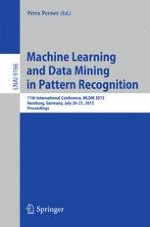2015 | Buch
Machine Learning and Data Mining in Pattern Recognition
11th International Conference, MLDM 2015, Hamburg, Germany, July 20-21, 2015, Proceedings
herausgegeben von: Petra Perner
Verlag: Springer International Publishing
Buchreihe : Lecture Notes in Computer Science
